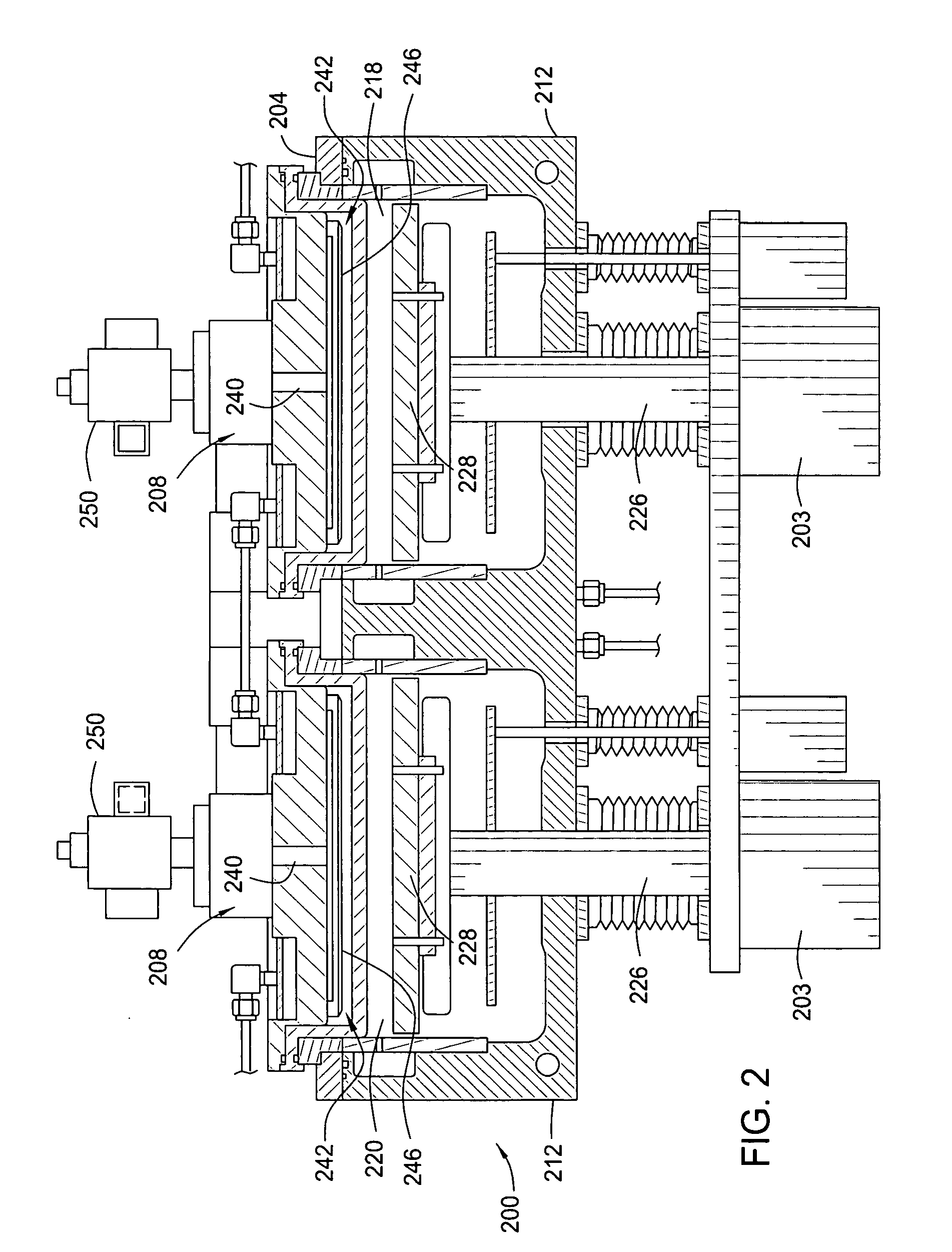Enhancement of remote plasma source clean for dielectric films
a technology of dielectric films and plasma sources, which is applied in the direction of plasma techniques, cleaning of hollow articles, coatings, etc., can solve the problems of recombined oxygen radicals generated by remote plasma sources, damage to chamber components, and undesirable side effects of methods that have been used to remove material originating from other dielectric films, such as non-carbon-containing silicon oxide films
- Summary
- Abstract
- Description
- Claims
- Application Information
AI Technical Summary
Benefits of technology
Problems solved by technology
Method used
Image
Examples
example 1
[0067]A PRODUCER® CVD chamber was cleaned by generating reactive oxygen species and reactive fluorine species in an Astron®ex remote plasma source and introducing the reactive oxygen species and reactive fluorine species into the PRODUCER® CVD chamber and exposing the interior surfaces of the chamber to the reactive species for about 150 seconds in the absence of RF power in the chamber to remove about 6000 Å of a low dielectric constant film comprising silicon, oxygen, and carbon. The low dielectric constant film had been previously deposited in the chamber in a PECVD process from a gas mixture comprising methyldiethoxysilane (mDEOS), norbornadiene (BCHD), and oxygen. The reactive oxygen species were introduced into the chamber from the remote plasma source at a flow rate of about 6000 sccm. The reactive fluorine species were introduced into the chamber from the remote plasma source at a flow rate of about 500 sccm. Helium was used as a carrier gas and was flowed into the chamber a...
PUM
| Property | Measurement | Unit |
|---|---|---|
| pressure | aaaaa | aaaaa |
| pressure | aaaaa | aaaaa |
| pressure | aaaaa | aaaaa |
Abstract
Description
Claims
Application Information
 Login to View More
Login to View More - R&D
- Intellectual Property
- Life Sciences
- Materials
- Tech Scout
- Unparalleled Data Quality
- Higher Quality Content
- 60% Fewer Hallucinations
Browse by: Latest US Patents, China's latest patents, Technical Efficacy Thesaurus, Application Domain, Technology Topic, Popular Technical Reports.
© 2025 PatSnap. All rights reserved.Legal|Privacy policy|Modern Slavery Act Transparency Statement|Sitemap|About US| Contact US: help@patsnap.com



